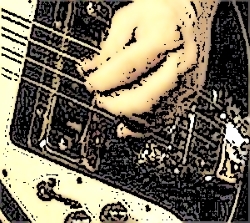
The Eight Key Ranges
There is a lot you can sculpt with bass EQ – well, there is a lot more frequency range than you might think.
Without going overboard, here are eight frequency ranges and the type of work you can perform in each area.
Boomy (40 Hz – 90 Hz)
Fat (75 Hz – 150 Hz)
Thin (40 Hz – 180 Hz)
Power (40 Hz – 150 Hz)
Impact (40 Hz – 150 Hz)
Clarity (190 Hz – 800 Hz)
Presence (800 Hz – 6.5 kHz)
Attack (120 Hz – 4.1 kHz)
Those first five are all sub-200 Hz.
However, look at what you can do above that. Presence and attack can reach as far as 6.5 kHz.
Then we have what might be the most important of all: clarity.
Using a digital mixer with the ability for multiple areas of boosts and cuts, you can do a lot.
But what can you do with the analog boards? Analog consoles come in a variety of EQ designs, from a single sweeping mid design to sweeping mid’s for “high mids” and “low mids.”
In the case of the single sweeping mid, focus on clarity and/or presence.
In the case of mixers with the two sweeping mids, you’ve got quite a bit more to work with. In the end, when you have limited EQ control, focus on clarity, presence, and the fat/thin.
If you aren’t sure where to start, start by listening to a collection of songs that the worship teams cover. Listen to the sound of the bass. Make notes on how it sounds. Now, you’ve got a sound goal.
A tip on bass EQ: don’t forget about the volume control. I’ve had times where I liked the mix but it seemed it didn’t fit.
Cutting a few dB put it perfectly into the mix.
The Kick Drum
Sculpting the sound of a mix means mixing instruments against each other. In the case of the bass, much of that work will be done with the kick drum in mind.
The bass and the kick drum can support each other and take turns driving the song, from one song to the next. You’ll want to know the role of the bass in each song so check with the musicians.
Compression and Gating
You may or may not have at your disposal, the ability to work with compression and gating with regards to the bass. If you do, start by using these features to separate the sound out from the kick drum.
A natural part of the EQ process is mixing against the other instruments and compression and gating is another tool you can use to do that.
Summary
As you can see, the bass guitar has a wide range of frequencies that are used and you have a lot you can do with them. Not only will EQ bring out the right sound but compression and gating can also help significantly with the sound.
The bass is just as important as a rhythm guitar and, with a little work, you can make your mixes sound even better!
Chris Huff is a long-time practitioner of church sound and writes at Behind The Mixer, covering topics ranging from audio fundamentals to dealing with musicians – and everything in between.
